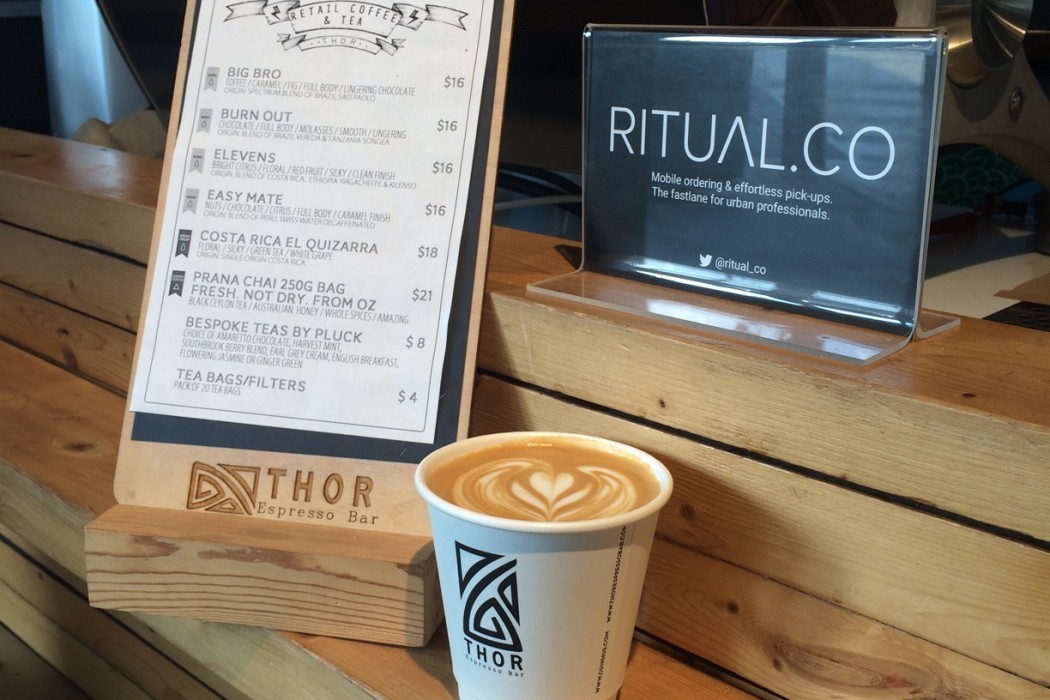
Despite being only a year and a half old, Ritual has quickly established itself as the go-to lunch ordering app for many in Toronto and Chicago.
However, with the launch of a new loyalty program, the company has indicated that it wants to move beyond just processing payments, and compete with incumbents that have dominated the loyalty space via the long-tail of independent merchants. Servicing 500 locations in Toronto, Ritual claims that it has dethroned Starbucks as the largest food and beverage loyalty program in Toronto (as of 2014, there were apparently 160 Starbucks locations in the city alone).
“The sheer number of locations alone dwarfs Starbucks. We have over 500 places in Toronto offering rewards and discounts now, that’s significant and doesn’t even include what we’re doing in the States,” said Craig Hunter, general manager for Ritual, adding that Ritual has 300 merchants using the platform in Chicago. “Just here in Toronto, no one comes close to 500 locations.”
With Ritual Rewards, users can now earn points — 10 points for every dollar — on every purchase that go toward free food and drinks. Ten thousand points equal ten dollars to spend on restaurants, and many of Ritual’s restaurants offer 20 times the points on every other purchase. Hunter said that the program incentivizes customers to use Ritual more often, while merchants can enjoy consistent means of revenue.
The company has also introduced a new Ritual Elite program alongside Ritual Rewards. Users that make at least eight purchases a month get 1.5 times the points for every dollar purchase, a dedicated assistant on standby available to address concerns, and receive access to the Ritual FirstTaste program that enables them to try new merchants before they roll out to the broader platform. Hunter said that the latter feature addresses the issue of merchants being overwhelmed by orders when they first sign on to the platform, and allows merchants to get a sense of how Ritual works for them.
“Originally when we started, we had just a handful of merchants,” said Hunter. “We have our sights set on future cities, and we’re looking to expand to other cities in the next few weeks.”
Hunter also said that the new service isn’t just valuable for customers to save on their orders — it’s also key to allowing independent businesses access to data and analytics that, at one time, only larger enterprises could afford.
“What we’re very much in the business of doing is helping our partners generate more revenue, get better insights into their customers, so we’re continuing to build new features that service that marketplace,” Hunter said. “Partners get more insights and data. When you’re entering a line-by-line order in a POS, you get info on what was ordered but you don’t know who ordered it. The difference with us is when you’ve got a phone in your pocket, we can see where you ordered in the neighbourhood, and how many times you went back to that place in a given period. Those frequency rates are valuable for restaurants.”
This story was originally posted on out sister site Betakit.
MobileSyrup may earn a commission from purchases made via our links, which helps fund the journalism we provide free on our website. These links do not influence our editorial content. Support us here.


